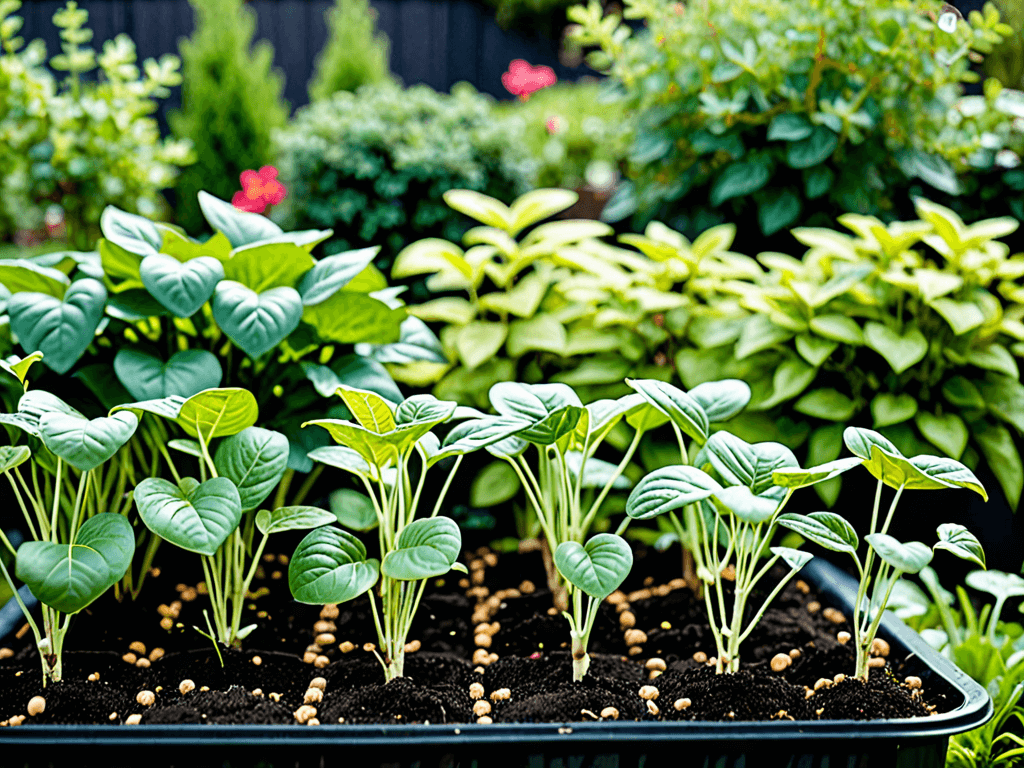Embracing sustainable gardening tips can significantly reduce your environmental footprint while enhancing your garden’s overall health.
With these eco-friendly practices, you can create a lush, vibrant space that supports biodiversity and conserves resources.
This guide will walk you through the essential elements of sustainable gardening, from choosing earth-friendly plants to implementing effective water conservation techniques.
Understanding Sustainable Gardening
Sustainable gardening involves practices that protect the environment and create a more eco-friendly garden.
At its core, it emphasizes working with nature rather than against it.
This means using methods that conserve resources, avoid harmful chemicals, and promote biodiversity.
By understanding the principles of sustainable gardening, such as reducing waste, conserving water, and maintaining soil health, gardeners can significantly minimize their ecological footprint.
These practices not only benefit the environment but also contribute to healthier, more resilient plant growth.
For instance, composting organic waste improves soil nutrition and reduces the need for artificial fertilizers.
Similarly, selecting native plants that thrive in local conditions means fewer resources are spent on maintenance.
Embracing these principles fosters a balanced garden ecosystem, where plants, insects, and soil all work together sustainably.
Benefits of Eco-Friendly Practices
Eco-friendly gardening practices offer numerous benefits that lead to a healthier environment and garden. By minimizing the use of chemical fertilizers and pesticides, gardeners can protect local wildlife and enhance soil quality. Adopting methods such as crop rotation and companion planting helps in maintaining soil fertility and natural pest control.
Furthermore, sustainable practices like rainwater harvesting can significantly reduce water consumption, helping conserve this precious resource. Choosing native or drought-resistant plants also contributes to lower water needs. These efforts not only create a more harmonious garden ecosystem but also promote biodiversity by encouraging beneficial insects and organisms to thrive.
Choosing the Right Plants
Choosing the right plants is a crucial step in ensuring a sustainable garden. By selecting native species, you ensure that plants are well adapted to the local climate and soil conditions, reducing the need for extra resources like water and fertilizers.
Native plants also support local wildlife, including beneficial insects, birds, and other animals that play roles in pollination and pest control.
When considering plants, it’s important to think about their growth habits and maintenance needs. Opting for varieties that are suited to your garden’s sun or shade conditions means less intervention is required for their growth.
Additionally, mixing perennial and annual plants can help maintain soil health and provide continuous blooms throughout the year, enhancing the garden’s beauty and ecological balance.
Water Conservation Techniques
Implementing water conservation techniques in your garden not only helps the environment but also ensures your plants stay healthy during dry spells.
One effective method is using a drip irrigation system. This system delivers water directly to the plant roots, minimizing evaporation and reducing water usage.
Additionally, capturing rainwater in barrels provides a free and sustainable water source for your garden.
Mulching is also a beneficial practice, as it helps retain soil moisture and reduces the need for frequent watering.
By applying a thick layer of mulch around plants, you can keep the soil cooler and prevent water from evaporating quickly.
Grouping plants with similar water needs together is another way to maximize water efficiency, ensuring that each is appropriately cared for without waste.
Soil Health and Composting
Maintaining soil health is vital for a thriving garden, and composting plays a key role in this process.
Composting involves breaking down organic materials to create nutrient-rich soil amendments, which enhance soil structure and fertility.
Adding compost to your garden improves water retention, reduces the need for chemical fertilizers, and promotes the growth of beneficial microorganisms.
To start composting, combine green materials like kitchen scraps with brown materials such as dried leaves.
Turn the pile regularly to aerate it and speed up decomposition.
Over time, this mixture transforms into dark, crumbly compost that enriches the soil.
Encourage a balance of these components to ensure efficient composting and support robust plant development.
Natural Pest Control Methods
Natural pest control methods are crucial for maintaining a healthy garden ecosystem without harming beneficial insects. One effective approach is attracting predatory insects like ladybugs and lacewings, which feed on common garden pests such as aphids. Planting companion plants that repel harmful insects, like marigolds and neem, also acts as a natural deterrent.
Additionally, using traps and barriers can protect plants from being infested. Sticky traps are useful for catching flying pests, while physical barriers like floating row covers shield plants from larger insects. Embracing these methods not only reduces pesticide use but also promotes biodiversity, ensuring that your garden thrives in a balanced environment.
Seasonal Planting Strategies
Applying seasonal planting strategies helps maximize the success and productivity of your garden by aligning plant growth with natural cycles. In spring, focus on sowing cool-weather crops like lettuce and peas, which thrive with mild temperatures. As summer approaches, transition to warm-weather crops such as tomatoes, peppers, and squash, taking advantage of the increased sunlight and warmth.
During fall, consider planting hardy vegetables like kale and carrots that can endure cooler temperatures and even improve in flavor after a frost. Incorporating cover crops in winter, such as clover or rye, benefits soil health by preventing erosion and adding nutrients back into the earth. This strategic approach ensures that your garden remains productive throughout the year, optimizing each season’s unique conditions.
Gardening Tools for Sustainability
Sustainable gardening requires tools that are not only effective but also have a minimal impact on the environment. Consider investing in manual tools like hand trowels, pruners, and hoes made from recycled materials. These tools save energy compared to powered devices and often require less maintenance.
Electric or battery-operated tools are more eco-friendly alternatives to gasoline-powered ones. They reduce emissions and are typically quieter, making your gardening experience more pleasant. Rain gauges and soil moisture meters help conserve water by providing accurate data, ensuring plants receive the right amount of hydration.
By selecting these sustainable tools, you support the environment while performing essential gardening tasks more efficiently.
Conclusion: Embracing Sustainability in Gardening
Implementing sustainable gardening practices offers both ecological and personal advantages, from conserving resources to fostering a richer connection with nature.
By understanding plant needs and utilizing eco-friendly tools and techniques, gardeners create a balanced ecosystem.
As we learn to grow in harmony with the environment, we contribute to the health and vitality of our planet.
Adopting practices like natural pest control and strategic planting ensures gardens thrive sustainably, offering beauty and bounty for years to come.
FAQ – Frequently Asked Questions on Sustainable Gardening
What are some essential sustainable gardening tools?
Essential tools include manual hand tools made from recycled materials, electric or battery-operated tools, rain gauges, and soil moisture meters.
How can I conserve water in my garden?
Use a drip irrigation system, rain barrels, and apply mulch to retain soil moisture. Group plants with similar water needs together.
Why should I choose native plants for my garden?
Native plants are adapted to local climate and soil conditions, requiring less water and promoting biodiversity.
What is the benefit of composting?
Composting creates nutrient-rich soil amendments that enhance soil structure, improve water retention, and support healthy plant growth.
How can I implement natural pest control methods?
Attract predatory insects, use companion plants, and employ traps and barriers to minimize pesticide use while promoting biodiversity.
What are seasonal planting strategies?
Adjust plant selection by season, such as growing cool-weather crops in spring and warm-weather crops in summer, to maximize productivity.


